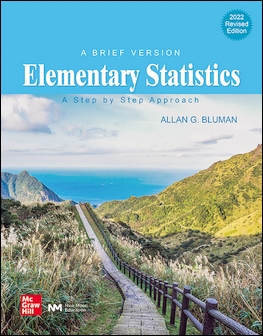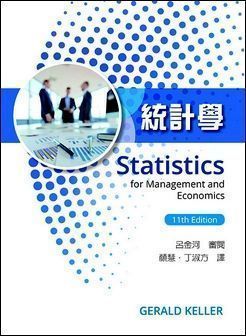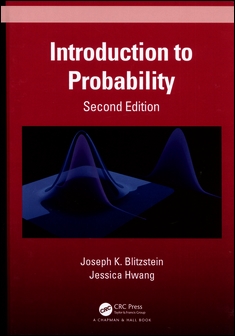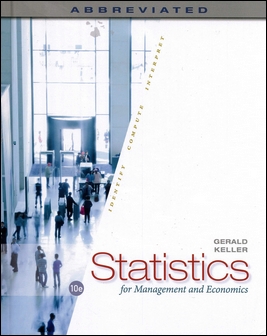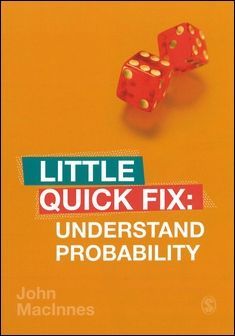書籍分類
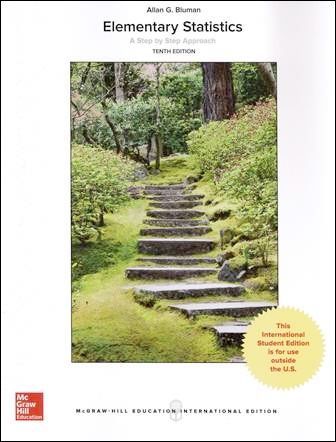
Elementary Statistics: A Step by Step Approach 10/e
作者:Allan Bluman
原價:NT$ 1,350
ISBN:9781259922015
版次:10
年份:2018
出版商:McGraw-Hill
頁數/規格:880頁/平裝彩色
版次:10
年份:2018
出版商:McGraw-Hill
頁數/規格:880頁/平裝彩色
內容介紹 目錄 作者介紹
- Description
- The Student Solution Manual provides students with worked solutions to the odd exercises in Elementary Statistics: A Step by Step Approach.
- For the first time we are offering ALEKS® 360 for Introduction to Statistics with Bluman, Elementary Statistics: A Step by Step Approach. This version of ALEKS is fully integrated with Elementary Statistics. It is the perfect companion to your textbook and to help students master the content of a general statistics course.
- Over 1800 exercises are located at the end of major sections within each chapter.
- Hypothesis-Testing Summaries are found at the end of Chapter 9 (z, t, X2, and F tests for testing means, proportions, and variances), Chapter 12 (correlation, chi-square and ANOVA), and Chapter 13 (nonparametric tests) to show students the different types of hypotheses and the types of tests to use.
- A Data Bank listing various attributers (educational level, cholesterol level, gender, etc.) for 100 people and several additional data sets using real data are included and referenced in various exercises and projects throughout the book.
- An updated reference card containing the formulas and z, t, X2, and PPMC tables is included with this textbook.
- End-of-chapter Summaries, Important Terms, and Important Formulas give students a concise summary of the chapter topics and provide a good source for quiz or test preparation.
- Review Exercises are found at the end of each chapter.
- Special sections called Data Analysis require students to work with a data set to perform various statistical tests or procedures and then summarize the results.
- Chapter quizzes, found at the end of each chapter, include multiple-choice, true-false, and completion questions along with exercises to test students' knowledge and comprehension of chapter content.
- The Appendixes provide students with extensive reference tables, a glossary, and answers to all quiz questions and odd-numbered exercises. New to this edition, the additional Online Appendixes include algebra revies, an outline for report writing, Bayes’ theorem, and an alternative method for using the standard normal distribution.
- The Applying the Concepts feature is included in all sections and gives students an opportunity to think about the new concepts and apply them to examples and scenarios similar to those found in newspapers, magazines, and radio and television news programs.
Elementary Statistics: A Step by Step Approach is the perfect general statistics text for students whose mathematical background is limited to algebra. This text is not intended for AP Statistics. The book follows a nontheoretical approach without formal proofs, explaining concepts intuitively and supporting them with abundant examples.
Key Supplements
Elementary Statistics: A Step by Step Approach was written as an aid in the beginning statistics course to students whose mathematical background is limited to basic algebra. The book follows a nontheoretical approach without formal profs, explaining concepts intuitively and supporting them with abundant examples. The applications span a broad range of topics certain to appeal to the interests of students of diverse backgrounds, and they include problems in business, sports, health, architecture, education, entertainment, political science, psychology, history, criminal justice, the environment, transportation, physical sciences, demographics, eating habits, and travel and leisure.
While a number of important changes have been made in the tenth edition, the learning system remains untouched and provides students with a useful framework in which to learn and apply concepts. Some of the retained features include the following:



